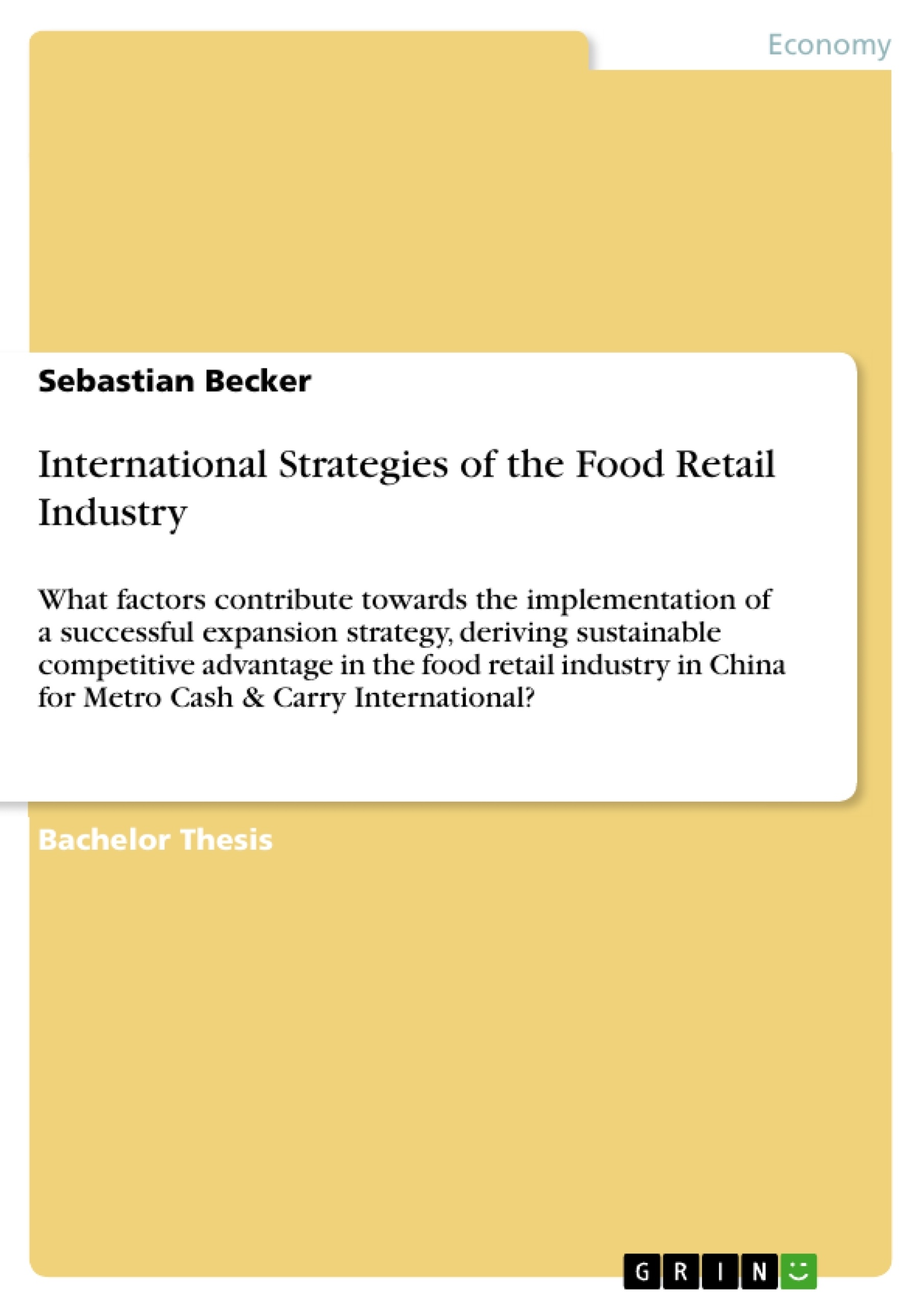This research is concerned with the evaluation of factors that contribute towards sustainable competitive advantage in the food retail sector in China. Increasing globalisation encounters problems to market particularities from the macro and micro point of view. This research emphasises on the evaluation of political, economical, social, technological, ecological, and legal factors, the market attractiveness based on the bargaining powers of buyers and suppliers, the transformation of resources into capabilities, and the creation of value along the supply chain of key international market players.
The research is undertaken on the bases of cutting edge literature, articles, and journals. It is enriched by the use of primary research in the form of an interview with the general manager of Metro Cash & Carry, the world’s largest self service food and non food retailer.
Contemporary studies have been conducted through online sources.
The contributing factors for a successful strategic alignment in China are economies of scale and scope. This has been gathered from the analysis and encompasses t the product range and the store format adaptability and excellent procurement logistics with regards to strong supplier relationship management. The store format adaptability arises from excellent local supplier relationship for optimized product fit.
The implications of this research derive recommendations in the area of quality and freshness of product assortment, excellent global procurement logistics, political negotiation powers, and organic growth for sustainable competitive advantage for future expansion.
Inhaltsverzeichnis (Table of Contents)
- Chapter 1 – Introduction
- Chapter 2 - Literature Review
- 2.1. Introduction
- 2.2. Definition of Strategy & Definitions of Significant Writers
- 2.3. Crafting a Strategy
- 2.4. The Micro Environment
- 2.5. The Macro Environment
- 2.6. Resources & Competitive Positioning
- 2.7. Macro Environment in China
- Chapter 3 - Research Methodology
- 3.1. Introduction
- 3.2. Applied Methods
- 3.2.1. Methodological Approach
- 3.2.2. Methods for the Macro Environment
- 3.2.3. Tools Evaluating Competitive Advantage
- 3.2.4. Methods for the Microenvironment
- Chapter 4 – Findings & Analysis
- 4.1. Introduction
- 4.2. Metro Group Profile
Zielsetzung und Themenschwerpunkte (Objectives and Key Themes)
This research evaluates factors contributing to sustainable competitive advantage in China's food retail sector. It examines the impact of political, economic, social, technological, ecological, and legal factors (PESTEL), market attractiveness, resource transformation into capabilities, and value creation along the supply chain for key international players. The study uses literature review and primary research (an interview with Metro Cash & Carry's general manager) to understand strategic alignment in the Chinese market.
- Sustainable competitive advantage in China's food retail industry
- Impact of PESTEL factors on market entry and success
- Role of resource capabilities and supply chain management
- Analysis of Metro Cash & Carry's international expansion strategy
- Factors contributing to successful strategic alignment in China
Zusammenfassung der Kapitel (Chapter Summaries)
Chapter 1 – Introduction: This chapter provides a general introduction to the research topic and outlines the scope of the study.
Chapter 2 - Literature Review: This chapter reviews existing literature on strategy, competitive advantage, and the macro and micro environments. It focuses specifically on the Chinese market context.
Chapter 3 - Research Methodology: This chapter details the research methods employed, including the methodological approach, data collection techniques, and tools used for analysis.
Chapter 4 – Findings & Analysis: This chapter presents initial findings and analyses, including a profile of the Metro Group and a preliminary assessment of key factors influencing market success. Further details are omitted to prevent spoilers.
Schlüsselwörter (Keywords)
Sustainable competitive advantage, food retail, China, international expansion strategy, PESTEL analysis, resource-based view, supply chain management, Metro Cash & Carry, strategic alignment, market entry.
- Citar trabajo
- Sebastian Becker (Autor), 2008, International Strategies of the Food Retail Industry , Múnich, GRIN Verlag, https://www.grin.com/document/186655



